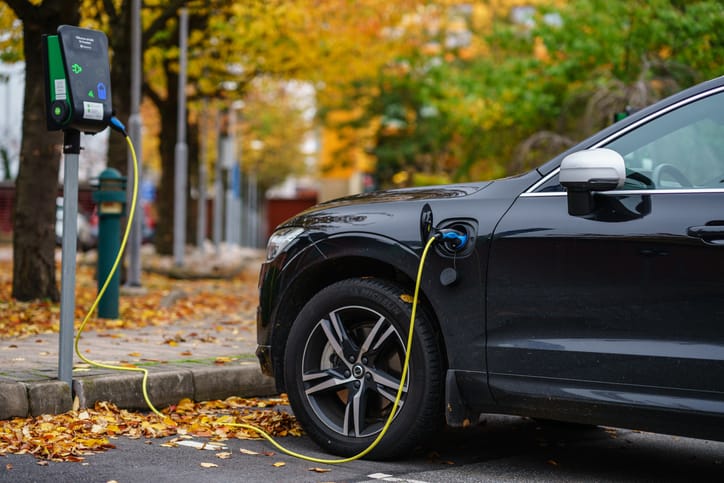Charging Speed Showdown: Comparing EV Fast-Charging Networks

The electric vehicle (EV) revolution is gaining momentum, but concerns about charging infrastructure remain a hurdle for many potential buyers. Range anxiety, the fear of running out of power before reaching a charging station, is a significant barrier to EV adoption.
Fast-charging networks, also known as DC fast chargers or Level 3 chargers, aim to alleviate this anxiety by delivering a significant amount of energy in a short time. Unlike slower Level 2 chargers, which are more common at home and public places, Level 3 chargers can typically add hundreds of miles of range in under 30 minutes. However, with numerous fast-charging networks emerging, choosing the right one for your needs can be confusing. This article will compare some of the major players in the US fast-charging landscape, highlighting their strengths, weaknesses, and coverage areas.
Factors to Consider When Choosing a Fast-Charging Network:
- Network Coverage: How widespread is the network's presence in your area and along your typical driving routes?
- Charging Speed: How quickly do the network's chargers deliver power? This is typically measured in kilowatts (kW).
- Cost: How much does the network charge per kilowatt-hour (kWh) of electricity? Some networks offer subscription plans for frequent users.
- Compatibility: Does the network's connector type match the charging port on your EV? The two most common standards are CCS Combo (used by most American and European automakers) and CHAdeMO (favored by some Asian brands).
- Reliability: How dependable are the network's chargers? Are they frequently out of service or experiencing technical issues?
Major Fast-Charging Networks in the US:
- Electrify America: Established by Volkswagen as a consequence of the Dieselgate emissions scandal, Electrify America boasts a rapidly expanding network of high-powered (up to 350 kW) chargers. They are particularly concentrated along major highways, making them ideal for long-distance travel. However, their pricing can be on the higher end, and their network is still under development in some areas.
- Tesla Supercharger Network: Exclusive to Tesla vehicles, the Supercharger Network is renowned for its speed and reliability. Tesla claims its V3 Superchargers can deliver up to 250 kW, enabling significant range gains in short charging times. However, the network is only accessible to Tesla owners and is not as widely available as some competitor networks.
- ChargePoint: One of the largest charging networks in the US, ChargePoint offers a mix of Level 2 and Level 3 chargers. Their DC fast chargers typically range from 50 kW to 125 kW, providing a good balance between speed and availability. They also partner with other networks like EVgo and Electrify America, allowing access to a broader charging infrastructure through their app.
- EVgo: EVgo offers a nationwide network of DC fast chargers, with a focus on urban areas and metropolitan corridors. Their charging speeds vary depending on location, but they generally range from 50 kW to 150 kW. EVgo offers both pay-as-you-go and subscription plans for frequent users.
- Other Networks: Several other regional networks exist, such as DC Fast Chargers, Flo by Electrify Canada, and Volta. These networks may offer competitive pricing or wider coverage in specific regions, so researching local options is recommended.
Examples of How Network Choice Can Impact Your Trip:
Imagine you're planning a road trip from Miami, Florida to Los Angeles, California. Here's how your choice of fast-charging network might affect your journey:
- Electrify America: With their extensive highway coverage and high-powered chargers, Electrify America could be a good choice. However, factor in potentially higher charging costs and potential gaps in coverage in less populated areas.
- Tesla Supercharger Network: If you own a Tesla, the Supercharger Network would be the most convenient option. However, the lack of access for other EV brands is a limitation.
- ChargePoint: Their network offers a good balance between availability and speed, potentially allowing for more flexible route planning. However, charging speeds may not be as fast as Electrify America or Tesla Superchargers.
The Future of Fast-Charging Networks:
The fast-charging landscape is rapidly evolving. Here are some key trends to watch:
- Increasing Network Density: Expect more chargers to be installed across the country, reducing range anxiety and making EVs more practical for everyone.
- Faster Charging Speeds: New technologies are enabling even faster charging times, potentially bringing EVs closer to gas station refueling speeds.
- Standardization: Greater emphasis on universal connector standards like CCS Combo will simplify charging for all EV drivers.
- Integration with Renewable Energy: Charging networks are increasingly exploring partnerships with renewable energy sources like solar and wind power to create a more sustainable charging infrastructure.
- Focus on Urban Charging: As electric vehicle adoption grows in cities, expect to see a rise in strategically placed fast-charging stations to cater to shorter commutes and urban errands.
Choosing the Right Network for You:
There's no one-size-fits-all answer when it comes to choosing a fast-charging network. Consider your typical driving habits, the make and model of your EV, and your budget. Here's a quick guide:
- Frequent Long-Distance Traveler: Prioritize networks like Electrify America or Tesla Superchargers (if applicable) for their extensive highway coverage and high charging speeds. Be prepared for potentially higher costs.
- Mostly Urban Driver: Networks like ChargePoint or EVgo may be suitable, offering a good balance of speed and availability within city limits. Consider subscription plans if you charge frequently.
- Occasional Fast-Charging User: Research local options and utilize apps like PlugShare or Chargeway to find the most convenient and cost-effective charger for your needs.
Conclusion:
The fast-charging landscape is rapidly developing, alleviating range anxiety and making EVs a more compelling choice for a wider range of drivers. By understanding the strengths and weaknesses of different networks, you can make informed decisions to keep your EV charged and on the road. As technology continues to evolve and charging infrastructure expands, the future of electric transportation looks increasingly bright.
